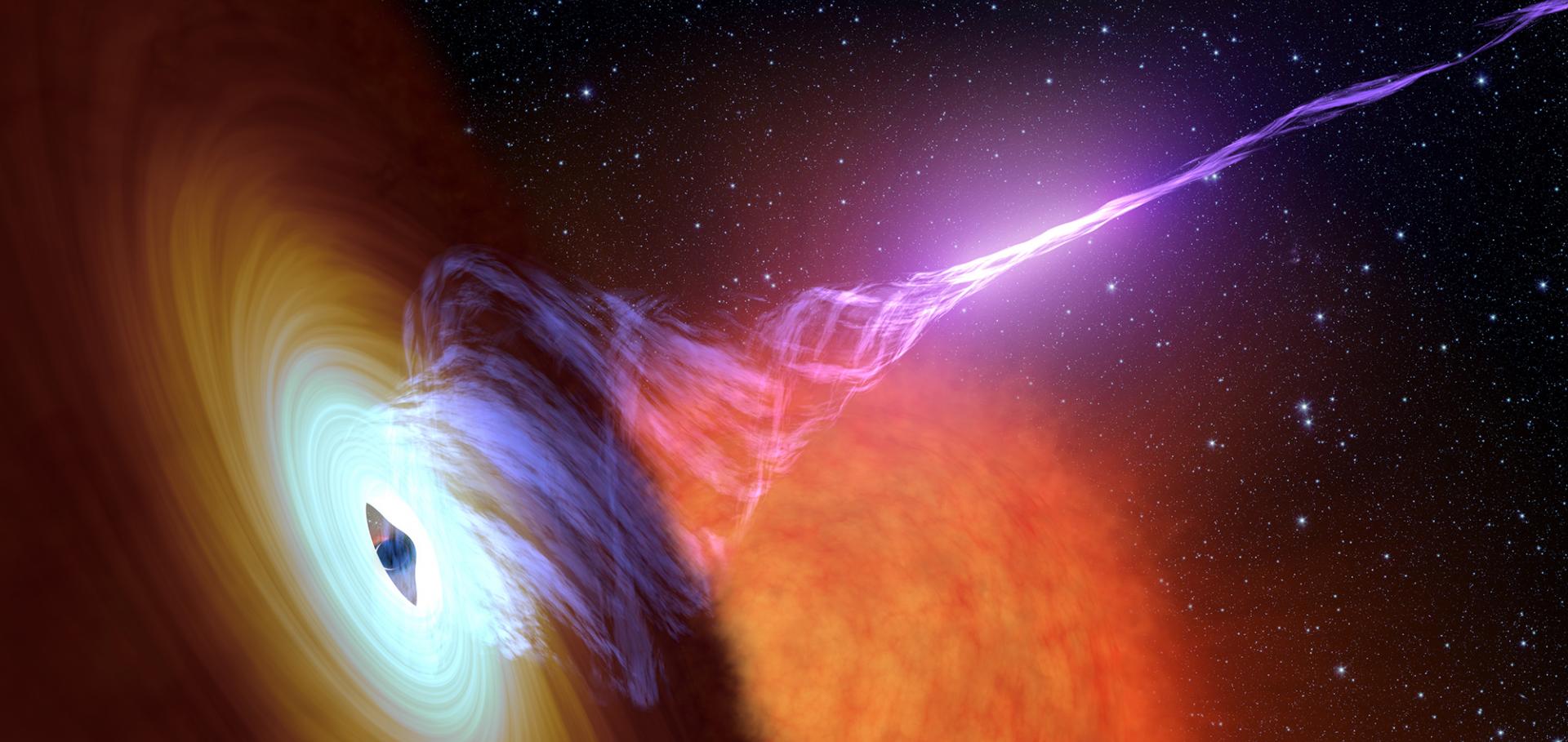An extremely powerful long-lived superluminal ejection from the black hole MAXI J1820+070
Nature Astronomy Nature Research 4:7 (2020) 697-703
Abstract:
Black holes in binary systems execute patterns of outburst activity where two characteristic X-ray states are associated with different behaviours observed at radio wavelengths. The hard state is associated with radio emission indicative of a continuously replenished, collimated, relativistic jet, whereas the soft state is rarely associated with radio emission, and never continuously, implying the absence of a quasi-steady jet. Here we report radio observations of the black hole transient MAXI J1820+070 during its 2018 outburst. As the black hole transitioned from the hard to soft state, we observed an isolated radio flare, which, using high-angular-resolution radio observations, we connect with the launch of bipolar relativistic ejecta. This flare occurs as the radio emission of the core jet is suppressed by a factor of over 800. We monitor the evolution of the ejecta over 200 days and to a maximum separation of 10″, during which period it remains detectable due to in situ particle acceleration. Using simultaneous radio observations sensitive to different angular scales, we calculate an accurate estimate of energy content of the approaching ejection. This energy estimate is far larger than that derived from the state transition radio flare, suggesting a systematic underestimate of jet energetics.An extremely powerful long-lived superluminal ejection from the black hole MAXI J1820+070
(2020)
A spectroscopic, photometric, polarimetric, and radio study of the eclipsing polar UZ Fornacis: the first simultaneous SALT and MeerKAT observations
Monthly Notices of the Royal Astronomical Society Oxford University Press (OUP) 492:3 (2020) 4298-4312
Radio and X-ray detections of GX 339-4 in quiescence using MeerKAT and Swift
Monthly Notices of the Royal Astronomical Society: Letters Oxford University Press 493:1 (2020) L132-L137
Abstract:
The radio-X-ray correlation that characterizes accreting black holes at all mass scales - from stellar mass black holes in binary systems to supermassive black holes powering active galactic nuclei - is one of the most important pieces of observational evidence supporting the existence of a connection between the accretion process and the generation of collimated outflows - or jets - in accreting systems. Although recent studies suggest that the correlation extends down to low luminosities, only a handful of stellar mass black holes have been clearly detected, and in general only upper limits (especially at radio wavelengths) can be obtained during quiescence. We recently obtained detections of the black hole X-ray binary (XRB) GX 339-4 in quiescence using the Meer Karoo Array Telescope (MeerKAT) radio telescope and Swift X-ray Telescope instrument on board the Neil Gehrels Swift Observatory, probing the lower end of the radio-X-ray correlation. We present the properties of accretion and of the connected generation of jets in the poorly studied low-accretion rate regime for this canonical black hole XRB system.Radio & X-ray detections of GX 339--4 in quiescence using MeerKAT and Swift
(2020)


